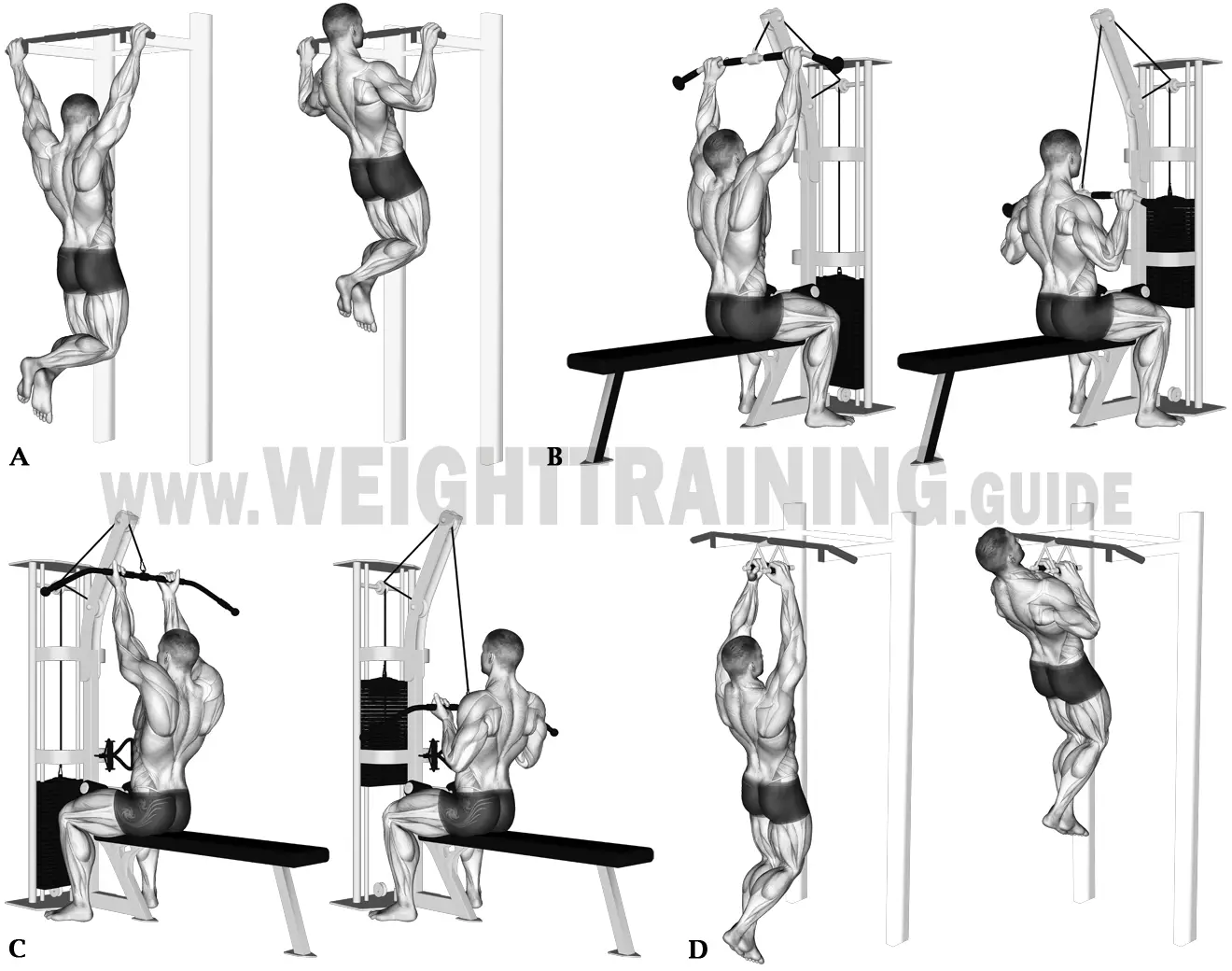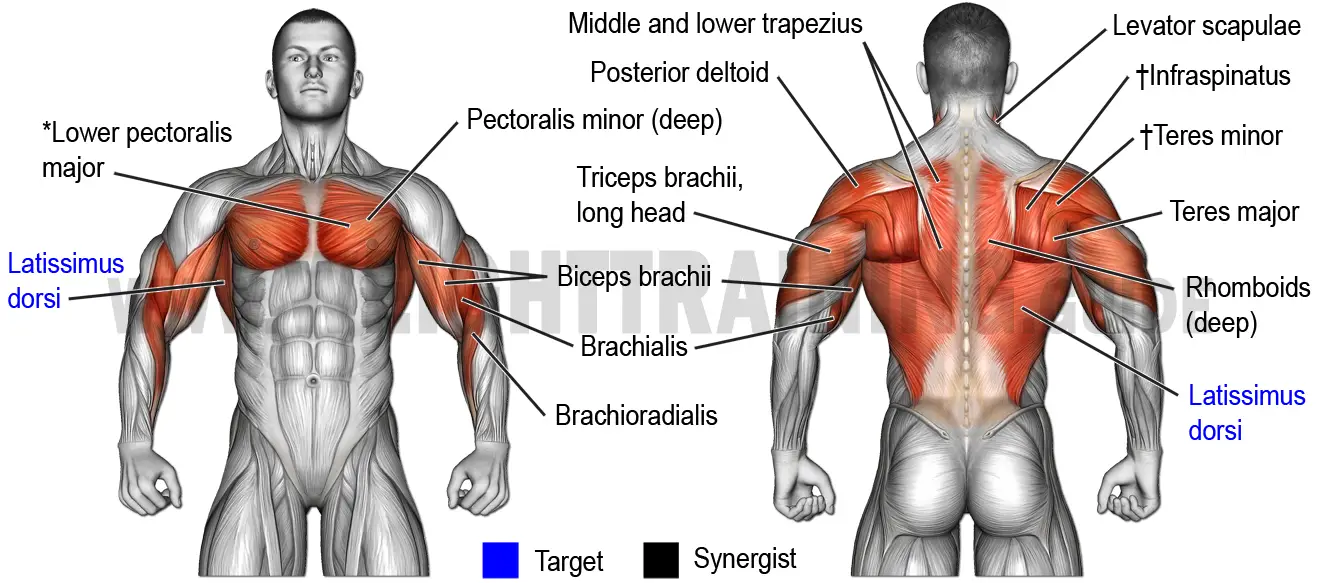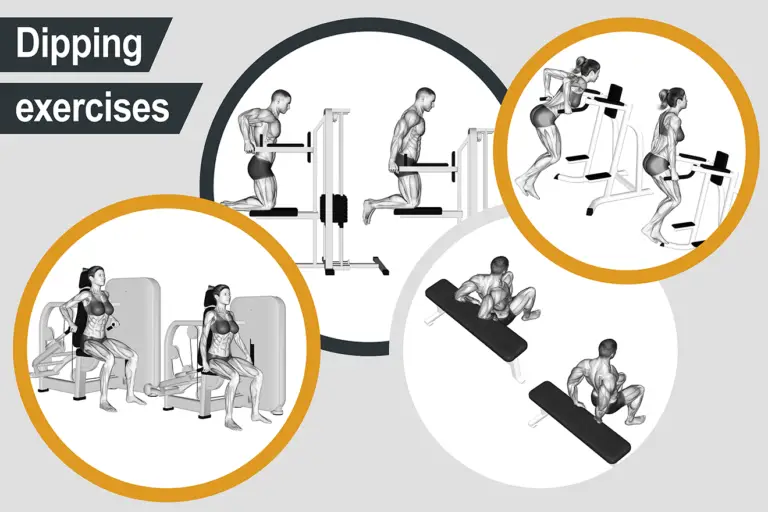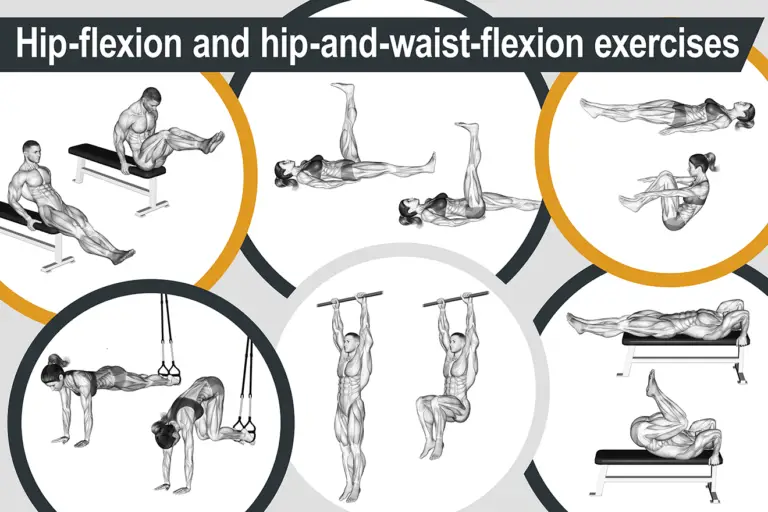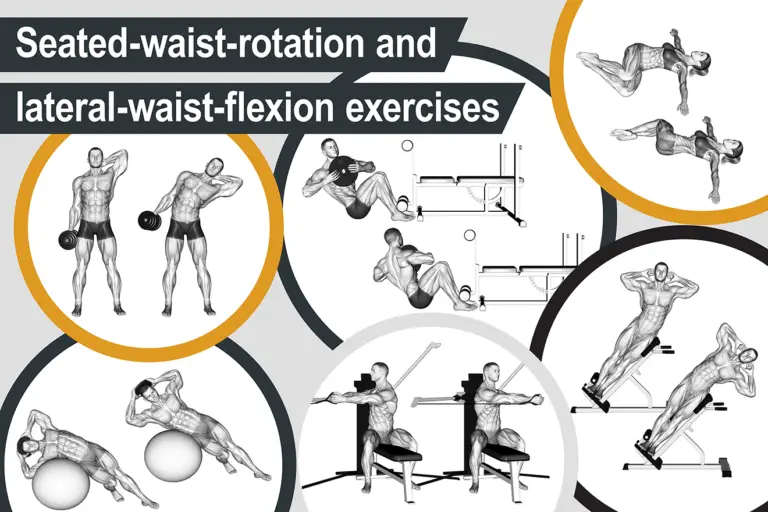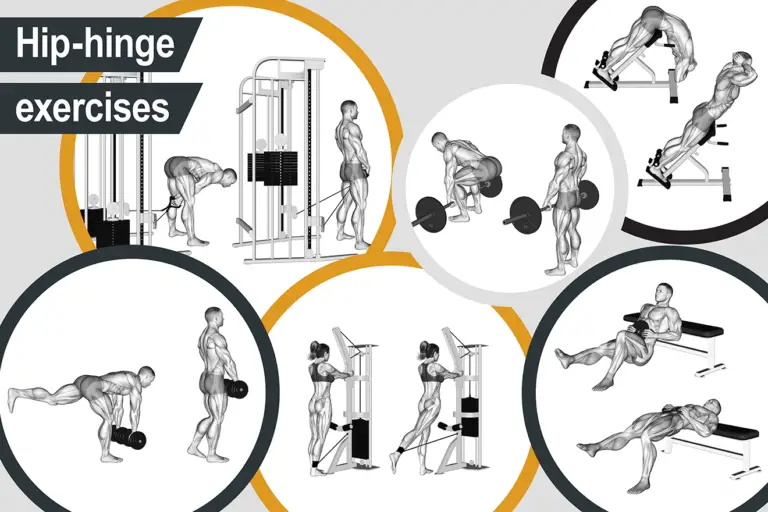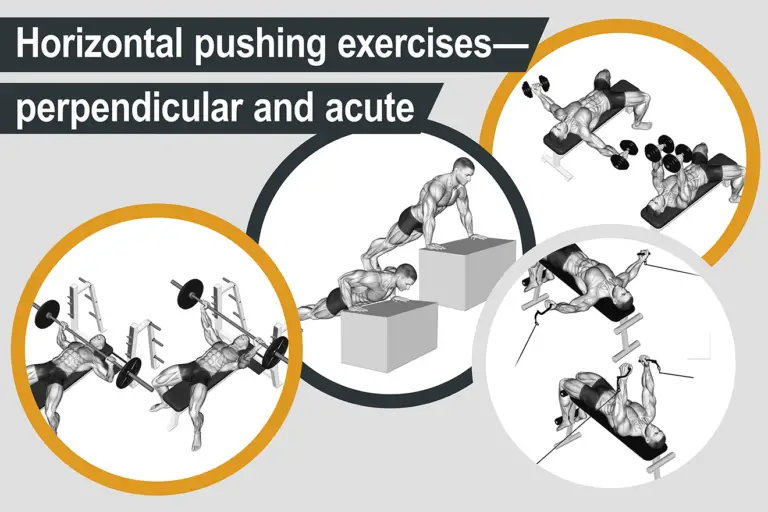Vertical pulling exercises
Movement patterns and classification
Vertical pulling exercises (for example, Figure 1) involve either pulling a weight vertically downward or pulling your body vertically upward while holding on to a stable bar. As two joints are involved (your shoulder and elbow), vertical pulling exercises are classified as compound.
The movement pattern that you follow when performing a vertical pulling exercise depends on the width of your grip. If you use a wide or medium grip (as you would with, for example, the wide-grip pull-up and the medium-grip lat pull-down; Figure 1, A and B, respectively), the movement pattern will combine shoulder adduction with elbow flexion. If you use a grip that is shoulder width or narrower (as you would with, for example, the underhand-grip lat pull-down and the close neutral-grip pull-up; Figure 1, C and D, respectively), the movement pattern will combine shoulder extension with elbow flexion.
Figure 1. Examples of vertical pulling exercises. A. wide-grip pull-up; B. medium-grip lat pull-down; C. underhand-grip lat pull-down; D. close neutral-grip pull-up.
Muscle activation
All vertical pulling exercises target your latissimus dorsi and synergistically activate your elbow flexors (biceps brachii, brachialis, and brachioradialis), teres major, posterior deltoid, rhomboids, levator scapulae, middle and lower trapezius, pectoralis minor, and the long head of your triceps brachii (Figure 2). However, medium- and wide-grip exercises also synergistically activate your infraspinatus and teres minor, whereas shoulder-width and narrower exercises also synergistically activate your lower pectoralis major.
Figure 2. Main muscles activated by vertical pulling exercises. *A synergist only if you use a shoulder-width or narrower grip. †A synergist only if you use a medium or wide grip.


